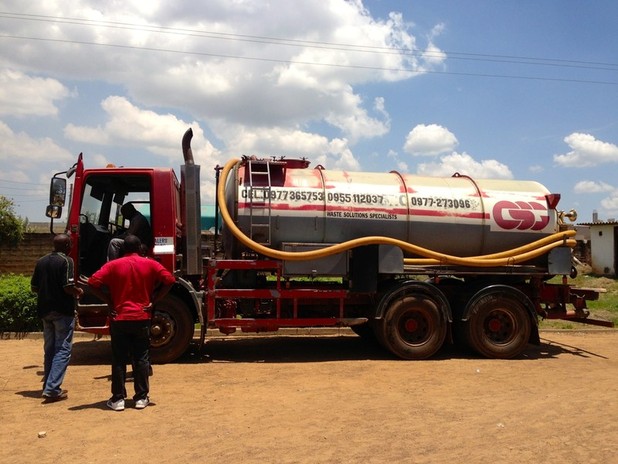March 19, 2013
IDEO.org has teamed up once again with our friends from Water and Sanitation for the Urban Poor (WSUP). We're exploring options for improving pit latrine technology in Zambia.
IDEO.org is working with Water & Sanitation for the Urban Poor (WSUP) to help design new ways to improve pit latrine emptying technology in Zambia and beyond. The engagement is scheduled as a 1-2-3 project, which means one week of preparation (desk research and expert interviews), two weeks of field research in Zambia, and three weeks of synthesis and design back at our IDEO.org studio in San Francisco. At the end of the rapid six-week project, we'll provide WSUP with design recommendations for a pit latrine emptying pilot that it can implement over the coming months.
What's a Pit Latrine?
A pit latrine is a dry toilet system that collects human excrement in a large container dug into the ground. Pit latrines can range from simple slit trenches to more elaborate systems with ventilation. 7 million Zambians do not have access to adequate pit latrine facilities.
What's Happening Now in Zambia?
Great question. Currently, pit latrines are emptied either by hand or with vacuum trucks. Both solutions are problematic. The process of emptying a pit latrine by hand generally involves digging a second hole in the ground near the first pit latrine. The informal workers then create a connecting tunnel at the bottom of the hole, which allows the waste inside the pit latrine to empty into the second hole. The major problem with this technique is that while it brings down the level of waste in the pit latrine, it doesn't actually remove the waste from the property. This can lead to a number of harmful side effects, including polluted drinking water and (eventually) a lack of space to deposit additional waste in the ground surrounding the pit latrine.
Vacuum trucks hypothetically offer a much faster and more sanitary way to remove waste from a pit latrine. Vacuum trucks remove the waste by sucking it from the toilet through a large tube, and then transport the waste to a central treatment center. Unfortunately, because the tube connected to these vacuum trucks cannot maintain suction over great distances, many pit latrines are inaccessible to waste removal because there are no truck-accessible roads nearby. Furthermore, the trucks are only able to remove liquid waste, leaving the solid waste behind in the latrine.
Our Project So Far
Our team hit the ground in Lusaka, Zambia and began conducting human-centered design "Hear" research. We started with interviews of various stakeholders, including owners of public pay-for-use latrines and commercial landlords (who generally own and pay for the cleaning of pit latrines linked to the residential compounds around Lusaka). The team also spoke with vacuum truck owners and some of the workers who empty pit latrines by hand with shovels and buckets. They also spoke with many end users of pit latrines.
The IDEO.org team is Matteo Signorini, Cris Valerio, and Danny Alexander. The team was joined in the field by Andy Narracott, the WSUP Deputy CEO.
Stay tuned for a rapid prototyping update from the field.
--Sean Hewens, IDEO.org Knowledge Manager














